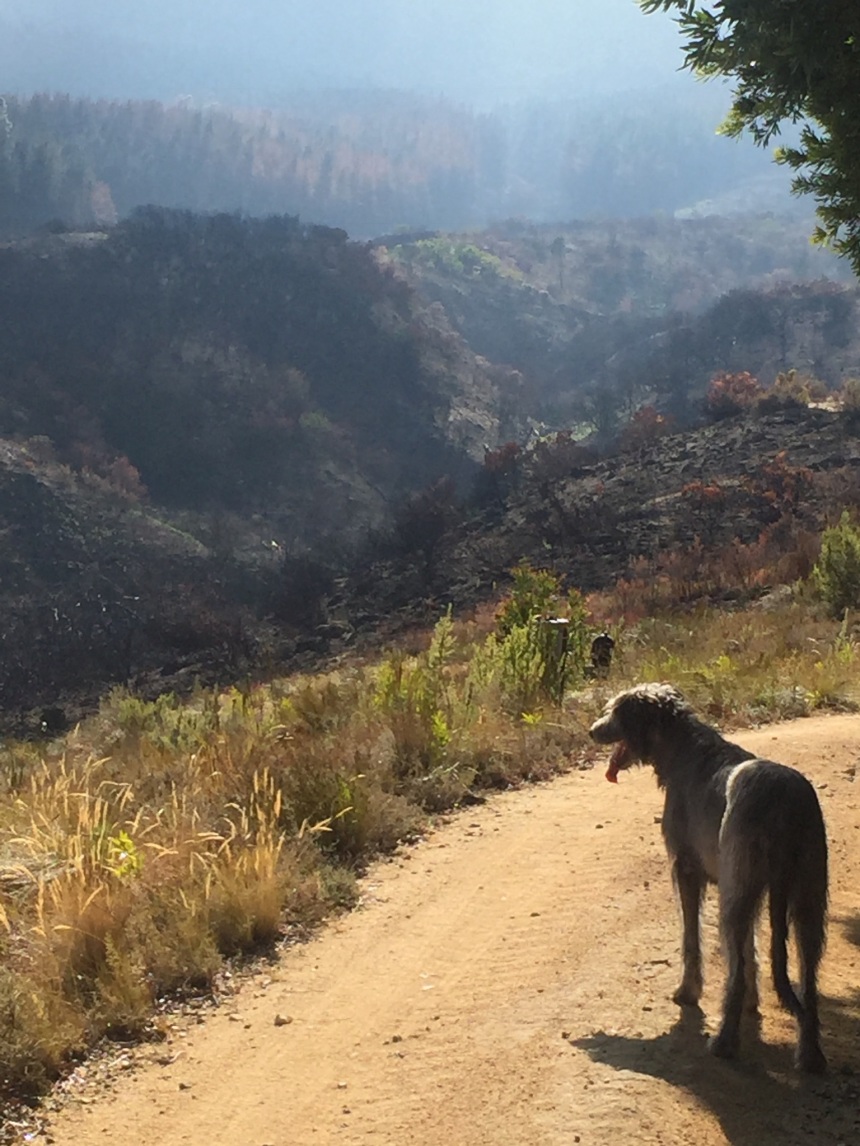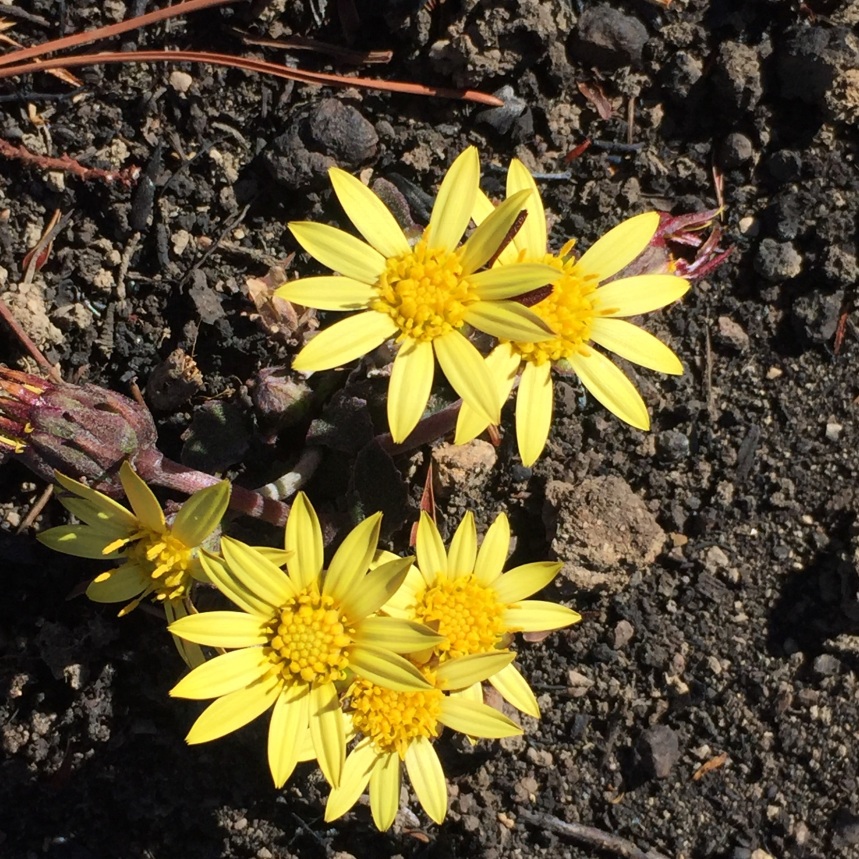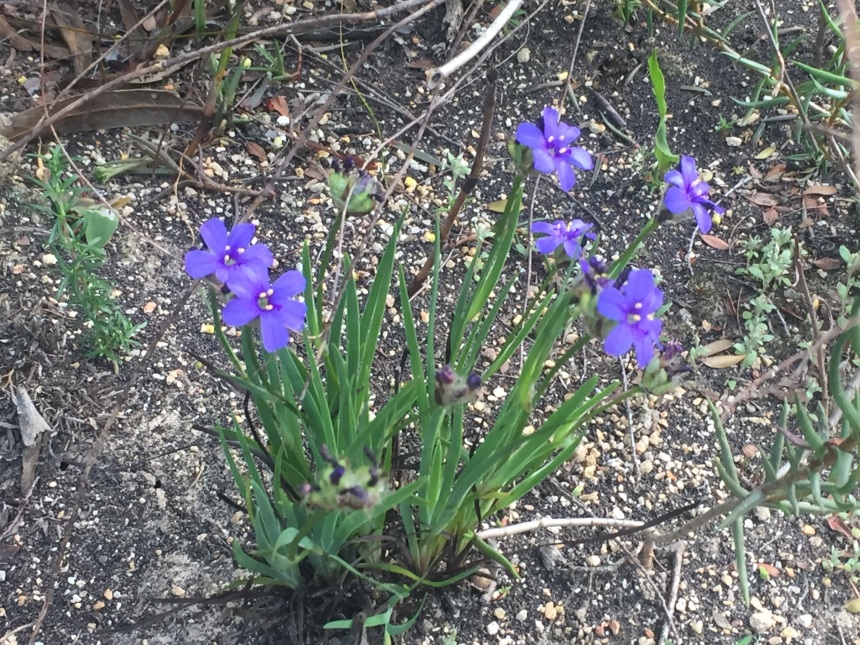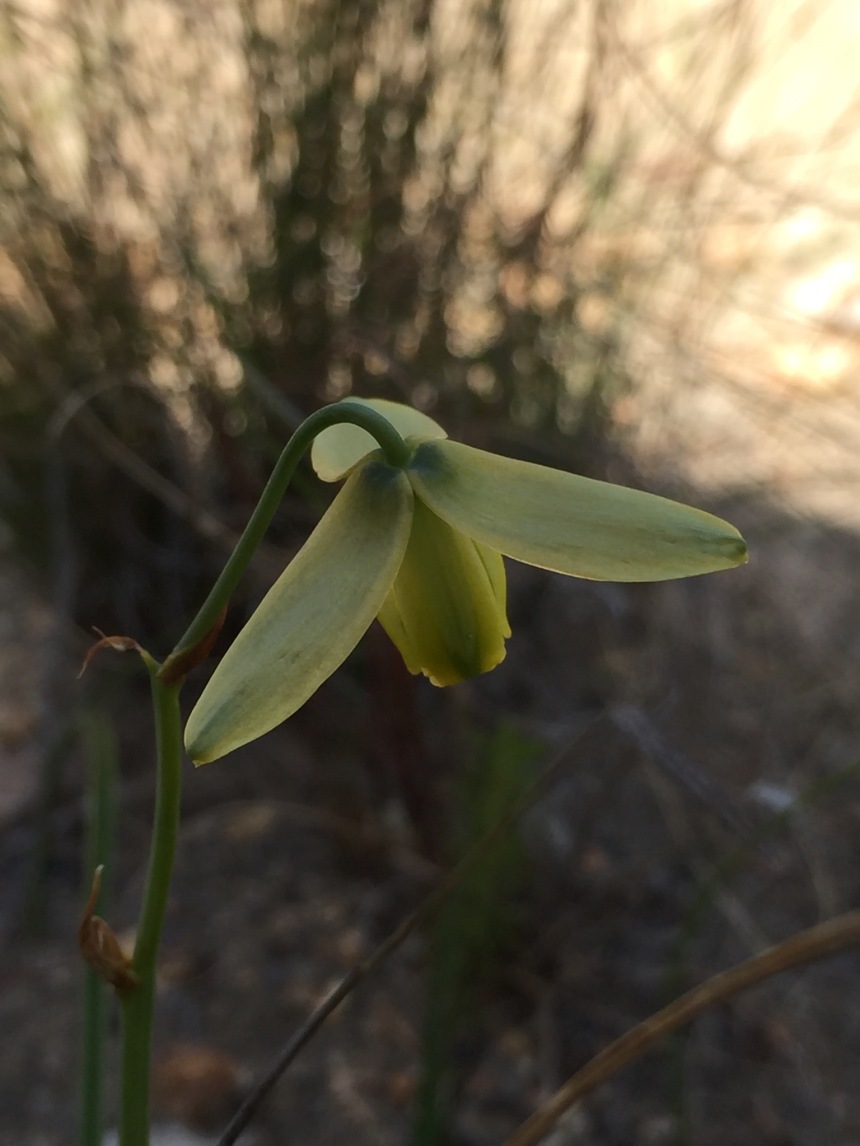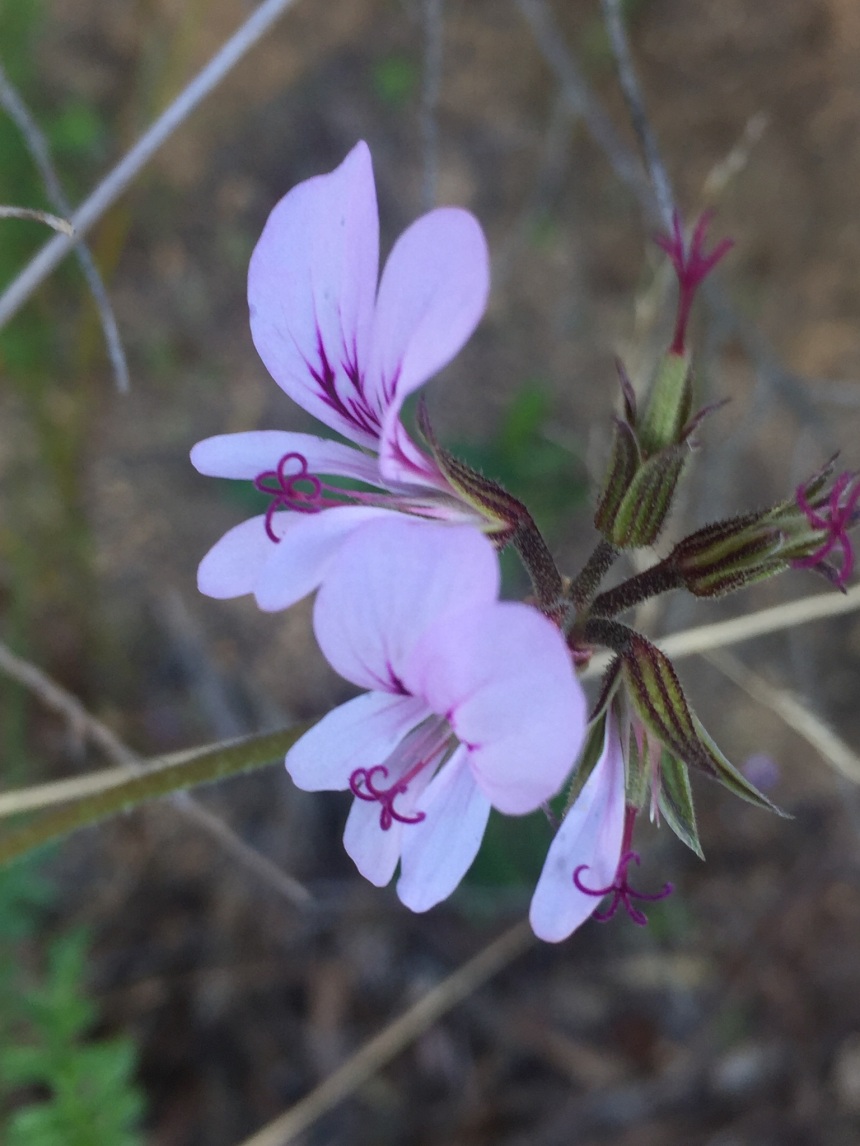Spring Days
Spring on the mountain, silent stillness, glowing sunsets and the promise of summer rising up with the heat from the valley. Days of cool rain followed by the smell of warm wet earth as the dogs and I run, happy and quite fit, around our mountain.
The research is almost done, and even while it held me chained to my desk I would slip out on a fine evening for a quick run with the dogs, returning to my books as the light faded, full of energy and enthusiasm to work late on into the evening.
Though the winter rains were light and we remain officially in drought, the fires have stimulated the flowering bulbs and the mountains are aglow with light. Where I have found one or two special specimens in specific places over the years suddenly everything is everywhere, clothing the burnt land with carpets of spring. The blue of Babiana fragrens is a distant reminder of bluebells woods at home in Ireland.
Tufts of Aristea spiralis are all over the farm, not just in the special damp places, while Spiloxene capensis, the peacock flower is also prolific along the drive and along some of the high damp banks. Some years I see hardly any of this charming stars, this year is a real treat.
The Moreas are also prolific. I love the salmon pink Moraea collina, again prolific everywhere after the fires, but I have been told they are poisonous to horses and cattle so I like them a little less now. Moraea tricuspidata has been so rare that some years I’ve missed it completely because of travelling. Impossible to miss it this year as it has emerged in copious quantity along the paths where we run.
Wurmbea punctata doesn’t have a particularly pretty name, but it’s a gorgeous little flower found only on damp slopes high on the mountain.
White stars light up the roadways as we run, here are Hesperantha and Geissorhiza ovata
In past years I have celebrated the Ericas in spring. So many are gone, and may take years to grow back. This one survived along the drive, Erica imbricata.
Another lovely sight is the Leucadendron tinctum. Where the two fires meet there is an unburned spot, where these flower prolifically. They are lovely now and splendid in summer when the leaves turn terracotta.

This one is rather unattractively known as the beetle lily, Baeometra uniflora. It grows in a very specific place, where our run takes us briefly onto the neighbours land. There are dozens of them there this year.
I am not entirely sure of the identification of this one. Dianthus albens?
Keeping the best for last. I love this tiny little green orchid. This colour seems to be hard for my iPhone camera, it doesn’t capture green flowers well. This is Disperis capensis, the cowled monk. I have only ever found it close to the olive groves above the house, this year it is suddenly everywhere. Utterly charming.
As always, the dogs are my faithful companions. We have a new Irish Wolfhound puppy, Maverick. He’s too young to come running, but enjoyed a sunset walk with the girls one lovely evening.











































































